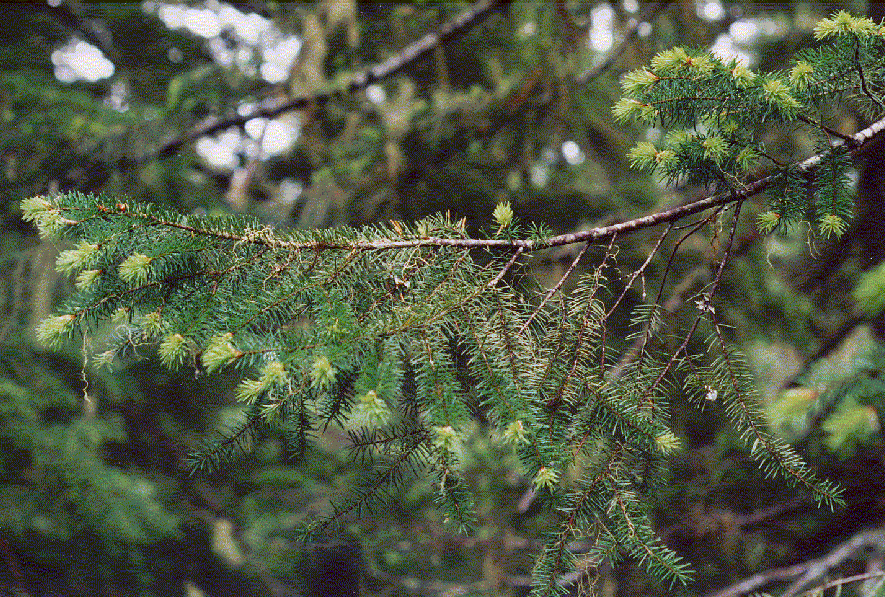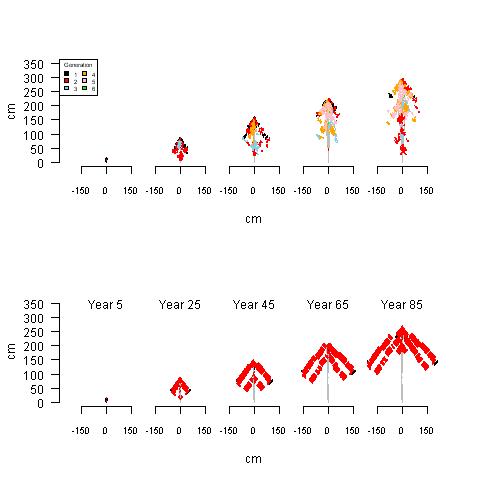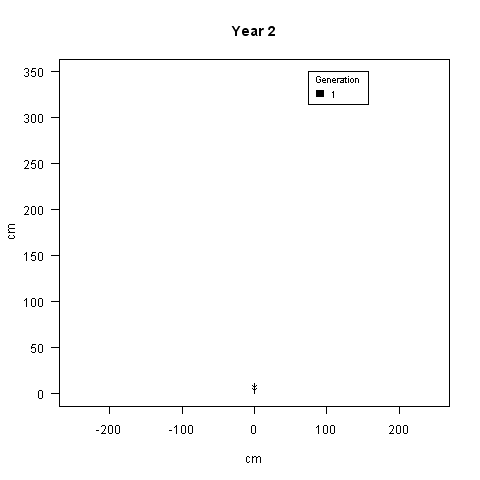| Old-growth Douglas-fir exhibits delayed adaptive reiteration (DAR) by which foliage is regenerated continuously within the existing crown structure. This growth pattern has been proposed to provide a compensation for size constraints in large, old Douglas-fir trees that enables them to persist when annual growth increment is minimal. There are competing theories for what limits size in old trees, and how trees are able to persist when they reach their maximum height and crown width. A limitation of current theories is that they tend to focus on one characteristic, while the trees themselves cope with multiple stresses simultaneously. We optimize a functional structural model of branch development for four design criteria simultaneously using Pareto optimality. The design criteria enable competing hypotheses to be considered simultaneously and allow for the identification of alternative Pareto optimal solutions. |

|
In the Pareto optimal solution space, two distinct morphologies were found. One tended to minimize the mean path length to terminal foliage at the expense of increasing the mean number of junctions from the branch base to terminal foliage. These are relative to a second morphology that tended to have much lower mean numbers of junctions and higher mean path lengths to terminal foliage. We concluded from these results that the hydraulic criteria provided a major design specification for the branch morphologies, and in particular the effect of the Douglas-fir old-growth branch morphology was to decrease the path length to terminal foliage at the expense of increased branch complexity.

|
This example of two major branch types found in the optimization (taken from Kennedy et al. 2010, Tree Physiology) show how their gross morphologies diverge as branch development progresses. We found that the top branch better matches empirical criteria for Douglas-fir branch growth and we proposed that the bottom branch resembles the process of morphogenesis in true firs. The characteristic that separates these two morphologies is the extensive DAR that results in continuous turnover of major foliage clusters. The lower branch has much less reiteration, and it relies on more extensive proliferation of existing lateral axes. This is similar to what has been observed in true firs. A key result is that we were able to identify AND explain two differing morphologies by optimizing the model against multiple criteria. |
We conclude that delayed adaptive reiteration is an opportunistic process wherein the emergence of suppressed buds are more likely to successfully proliferate in favorable local conditions. Each suppressed bud then represents a sampling point for the local environment. Although the major design specification for the Douglas-fir branch is the mean path length to terminal foliage, we found that the negative relationship among the remaining criteria with the mean number of junctions mitigated the level of reiteration that occurred. In particular we found that the number of junctions increased with the number of foliage clusters (i.e., the level of reiteration) and we proposed that this explains the limits on the number of foliage clusters observed on the branch.
